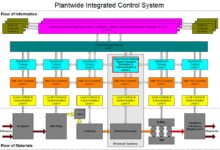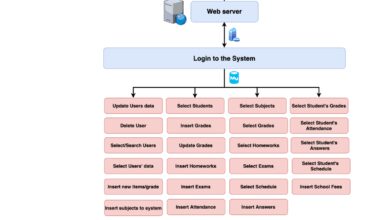System Development: 7 Powerful Steps to Master the Process
Ever wondered how complex software systems come to life? From banking platforms to smart home apps, system development is the engine behind them all. It’s not just coding—it’s strategy, design, testing, and evolution. Let’s break down this powerful process step by step.
What Is System Development and Why It Matters

At its core, system development refers to the structured process of creating, deploying, and maintaining information systems that meet specific user needs. These systems can be software-based, hardware-integrated, or a hybrid of both. The goal is to deliver a reliable, scalable, and efficient solution that solves real-world problems.
Defining System Development in Modern Context
System development has evolved from simple programming tasks into a multidisciplinary field involving business analysis, user experience design, cybersecurity, and project management. It’s no longer just about writing code—it’s about understanding user behavior, organizational goals, and technological constraints.
- Involves planning, designing, building, testing, and maintaining systems
- Applies to software, networks, databases, and enterprise platforms
- Used across industries: healthcare, finance, education, logistics
“System development is not just about technology; it’s about solving human problems with digital tools.” — MIT Technology Review
The Evolution of System Development Over Decades
Since the 1960s, system development has undergone radical transformation. Early systems were built using rigid, linear models like the Waterfall method. Today, agile, DevOps, and AI-driven development dominate the landscape.
- 1960s–1980s: Waterfall model dominated with sequential phases
- 1990s: Rise of object-oriented programming and prototyping
- 2000s–Present: Agile, Scrum, CI/CD, cloud-native development
The shift reflects growing demands for faster delivery, adaptability, and user-centric design. According to IBM, modern system development cycles are now 70% shorter than they were two decades ago due to automation and iterative practices (IBM Software Development).
The 7 Key Phases of System Development Life Cycle (SDLC)
The System Development Life Cycle (SDLC) is the backbone of any successful project. It provides a clear roadmap from idea to implementation and beyond. Each phase ensures quality, reduces risk, and aligns development with business objectives.
Phase 1: Requirement Analysis
This is where everything begins. Developers and stakeholders collaborate to define what the system must do. Requirements are gathered through interviews, surveys, and workflow analysis.
- Functional requirements: What features should the system have?
- Non-functional requirements: Performance, security, scalability
- Stakeholder identification: Who will use or be affected by the system?
Poor requirement gathering is responsible for over 40% of project failures, according to the Standish Group’s CHAOS Report. That’s why this phase is critical in system development.
Phase 2: System Design
Once requirements are clear, the next step is designing the architecture. This includes data models, interface layouts, and system workflows. Designers create blueprints that developers will follow.
- High-level design: Overall system structure and modules
- Low-level design: Detailed specifications for each component
- UI/UX wireframes: Visual representation of user interaction
Tools like UML (Unified Modeling Language) and ER diagrams are commonly used. A well-designed system reduces technical debt and makes future updates easier.
Phase 3: Implementation (Coding)
This is where the actual system development happens—writing code based on design documents. Programming languages, frameworks, and databases are selected based on project needs.
- Frontend: HTML, CSS, JavaScript, React, Angular
- Backend: Python, Java, Node.js, .NET
- Database: MySQL, PostgreSQL, MongoDB
Version control systems like Git are essential during this phase. Teams often use platforms like GitHub or GitLab to manage code collaboration and track changes (GitHub).
Phase 4: Testing
No system development is complete without rigorous testing. This phase ensures the software works as intended and is free from critical bugs.
- Unit testing: Individual components tested in isolation
- Integration testing: Modules tested together for compatibility
- System testing: Full end-to-end validation
- User Acceptance Testing (UAT): Real users test the system
Automated testing tools like Selenium, JUnit, and Postman help speed up the process and improve accuracy. Testing can consume up to 50% of the total development time in large-scale projects.
Phase 5: Deployment
After passing all tests, the system is deployed to the production environment. This can be done gradually (phased rollout), all at once (big bang), or in parallel with the old system.
- Cloud deployment: AWS, Azure, Google Cloud Platform
- On-premise installation: Local servers within an organization
- Hybrid models: Mix of cloud and local infrastructure
Continuous Integration/Continuous Deployment (CI/CD) pipelines automate deployment, reducing human error and increasing release frequency.
Phase 6: Operation and Maintenance
Once live, the system enters the maintenance phase. This includes fixing bugs, applying updates, optimizing performance, and adding new features.
- Corrective maintenance: Fixing issues post-deployment
- Adaptive maintenance: Adjusting to new environments or regulations
- Perfective maintenance: Enhancing functionality and usability
Studies show that maintenance can account for 60–80% of the total cost of a system over its lifetime. That’s why sustainable system development practices are crucial.
Phase 7: Evaluation and Feedback Loop
The final phase isn’t really the end—it’s the beginning of continuous improvement. User feedback, performance metrics, and system logs are analyzed to identify areas for enhancement.
- Collect user feedback via surveys, support tickets, analytics
- Monitor system performance using tools like New Relic or Datadog
- Plan iterative upgrades based on insights
This phase closes the loop and feeds back into future cycles, making system development a living, evolving process.
Popular System Development Methodologies Compared
Choosing the right methodology is one of the most important decisions in system development. Different approaches suit different project types, team sizes, and business goals.
Waterfall Model: The Traditional Approach
The Waterfall model follows a linear, sequential path. Each phase must be completed before the next begins. It’s highly structured and documentation-heavy.
- Best for projects with fixed requirements
- Easy to manage due to rigid structure
- Poor flexibility; changes are costly once development starts
Commonly used in government, defense, and regulated industries where compliance and documentation are paramount.
Agile Methodology: Flexibility and Speed
Agile is the most popular system development methodology today. It emphasizes iterative development, customer collaboration, and responsiveness to change.
- Work is divided into sprints (usually 2–4 weeks)
- Daily stand-ups, sprint reviews, and retrospectives
- Highly adaptive to changing requirements
According to the State of Agile Report, over 70% of organizations use Agile in some form. It’s especially effective for startups and fast-moving tech companies.
DevOps: Bridging Development and Operations
DevOps combines development (Dev) and operations (Ops) to streamline the entire system development lifecycle. It focuses on automation, continuous delivery, and collaboration.
- Automates testing, deployment, and monitoring
- Reduces time between code commit and production release
- Improves system reliability and uptime
Companies like Netflix and Amazon use DevOps to deploy thousands of times per day. It’s a game-changer in modern system development.
The Role of Project Management in System Development
Even the best technical teams can fail without proper project management. A skilled project manager ensures timelines are met, resources are allocated, and risks are mitigated.
Key Responsibilities of a System Development Project Manager
The project manager acts as the bridge between technical teams and business stakeholders. Their role is both strategic and operational.
- Define project scope, goals, and deliverables
- Create and manage timelines using Gantt charts or Kanban boards
- Coordinate between developers, testers, designers, and clients
- Monitor budget, risks, and change requests
Effective communication is their most valuable tool. Misalignment between teams can lead to delays, cost overruns, and failed deployments.
Essential Tools for Managing System Development Projects
Modern project management relies on digital tools to keep everyone on the same page.
- Jira: For Agile project tracking and issue management
- Trello: Visual task management with boards and cards
- Asana: Task assignment and workflow automation
- Microsoft Project: For complex, large-scale planning
These tools integrate with development environments, allowing real-time tracking of progress and bottlenecks.
Risk Management in System Development
Every system development project carries risks—technical failures, scope creep, budget overruns, security vulnerabilities.
- Identify potential risks early (e.g., technology obsolescence)
- Assess impact and likelihood
- Develop mitigation strategies (e.g., backup plans, fallback systems)
A proactive risk management plan can save millions in potential losses. NASA, for example, uses rigorous risk assessment in its system development for space missions.
Emerging Technologies Shaping the Future of System Development
Technology never stands still, and system development is being transformed by cutting-edge innovations.
Artificial Intelligence and Machine Learning
AI is revolutionizing how systems are built and maintained. From automated code generation to intelligent debugging, AI tools are becoming indispensable.
- GitHub Copilot: AI-powered coding assistant
- AI-driven testing: Predictive analytics for bug detection
- Self-healing systems: Automatically detect and fix issues
According to Gartner, by 2025, 30% of application development tasks will be automated using AI—up from less than 5% in 2022.
Low-Code and No-Code Platforms
These platforms allow non-developers to build applications using drag-and-drop interfaces. They’re accelerating system development in small businesses and departments.
- OutSystems, Mendix, Microsoft Power Apps
- Reduce dependency on IT teams
- Faster prototyping and deployment
While they can’t replace full-scale custom development, they’re ideal for internal tools and simple workflows.
Cloud-Native Development and Microservices
Modern system development increasingly relies on cloud-native architectures. Instead of monolithic applications, systems are built as microservices—small, independent components that communicate via APIs.
- Scalability: Each service can scale independently
- Resilience: Failure in one service doesn’t crash the whole system
- Faster updates: Teams can deploy changes without full redeployment
Platforms like Kubernetes and Docker are central to this shift. The global microservices market is projected to grow to $33.7 billion by 2028 (MarketsandMarkets).
Best Practices for Successful System Development
Following proven best practices can dramatically increase the chances of project success.
Start with Clear Objectives and Scope
One of the top reasons for project failure is unclear or shifting goals. Before writing a single line of code, ensure everyone agrees on what success looks like.
- Define measurable objectives (e.g., “Reduce user login time by 50%”)
- Document scope and get stakeholder sign-off
- Use a Statement of Work (SOW) to formalize expectations
Prioritize User-Centered Design
The best systems are built with the user in mind. Conduct user research, create personas, and test prototypes early.
- Apply UX principles to make interfaces intuitive
- Use A/B testing to validate design choices
- Involve real users in UAT (User Acceptance Testing)
Apple and Google are masters of user-centered design—study their approaches for inspiration.
Embrace Version Control and Collaboration
Version control isn’t optional—it’s essential. It allows teams to track changes, revert mistakes, and collaborate safely.
- Use Git for source code management
- Adopt branching strategies (e.g., Git Flow)
- Enforce code reviews before merging
Collaboration tools like Slack and Microsoft Teams also enhance communication across distributed teams.
Automate Testing and Deployment
Manual processes are slow and error-prone. Automation is key to speed, consistency, and reliability.
- Set up CI/CD pipelines using Jenkins, GitHub Actions, or GitLab CI
- Run automated tests on every code commit
- Deploy to staging and production environments automatically
Netflix automates 90% of its deployment process, enabling rapid innovation without sacrificing stability.
Document Everything
Good documentation is often overlooked but is critical for long-term success. It helps onboard new team members, troubleshoot issues, and maintain compliance.
- Technical documentation: API specs, architecture diagrams
- User manuals: Guides for end-users
- Process documentation: Development workflows, decision logs
Tools like Confluence and Notion make it easy to create and share documentation across teams.
Common Challenges in System Development and How to Overcome Them
Even with the best plans, system development projects face obstacles. Recognizing them early helps prevent costly delays.
Scope Creep: The Silent Project Killer
Scope creep occurs when new features or requirements are added without adjusting timelines or budgets. It’s one of the most common causes of project failure.
- Solution: Implement a formal change control process
- Require stakeholder approval for any new requests
- Use a backlog to prioritize future enhancements
Stick to the original scope unless the change is absolutely necessary.
Poor Communication Between Teams
Miscommunication between developers, testers, and business units leads to misunderstandings and rework.
- Solution: Hold regular sync meetings (daily stand-ups)
- Use shared project management tools
- Encourage open feedback and transparency
Agile methodologies excel here by promoting constant communication.
Technical Debt Accumulation
Technical debt refers to shortcuts taken during development that make future changes harder. While sometimes necessary, unchecked debt can cripple a system.
- Solution: Allocate time for refactoring in each sprint
- Enforce coding standards and peer reviews
- Monitor code quality with tools like SonarQube
Think of technical debt like financial debt—small amounts are manageable, but too much leads to bankruptcy.
Real-World Examples of Successful System Development
Learning from real-world successes can provide valuable insights into effective system development practices.
Case Study: Spotify’s Agile Transformation
Spotify transitioned from a traditional model to a highly decentralized Agile framework. They created autonomous “squads” focused on specific features.
- Each squad had full ownership from design to deployment
- Used continuous delivery to push updates multiple times per day
- Result: Faster innovation and improved team morale
Their model is now studied by companies worldwide as a blueprint for scaling Agile.
Case Study: NASA’s Mars Rover Software Development
NASA’s system development for Mars rovers involves extreme precision and reliability. A single bug could mean mission failure.
- Used formal methods and rigorous testing
- Simulated Martian conditions on Earth
- Implemented redundant systems for fault tolerance
This highlights the importance of robust processes in high-stakes environments.
Case Study: Amazon’s Cloud-Based Retail Platform
Amazon rebuilt its monolithic architecture into microservices running on AWS. This allowed massive scalability during peak events like Prime Day.
- Each service (e.g., shopping cart, recommendations) runs independently
- Enables thousands of deployments per day
- Improved system resilience and developer productivity
It’s a prime example of how modern system development enables business agility.
What is the main goal of system development?
The main goal of system development is to create reliable, efficient, and user-friendly information systems that meet specific business or user needs. It involves a structured process of planning, designing, building, testing, deploying, and maintaining software or integrated systems.
What are the 7 phases of system development?
The 7 phases are: 1) Requirement Analysis, 2) System Design, 3) Implementation (Coding), 4) Testing, 5) Deployment, 6) Operation and Maintenance, and 7) Evaluation and Feedback. Together, they form the System Development Life Cycle (SDLC).
Which methodology is best for system development?
There’s no one-size-fits-all answer. Agile is best for dynamic projects with changing requirements, Waterfall suits projects with fixed scopes, and DevOps excels in environments needing rapid, continuous delivery. The choice depends on project size, team structure, and business goals.
How long does system development take?
It varies widely. Small projects may take a few weeks, while large enterprise systems can take years. Agile projects often deliver in increments, with initial versions ready in 1–3 months. Factors like complexity, team size, and methodology influence duration.
What skills are needed for system development?
Key skills include programming, system analysis, database design, project management, testing, and problem-solving. Soft skills like communication, teamwork, and adaptability are equally important, especially in collaborative environments.
System development is more than just building software—it’s about creating solutions that drive progress. From defining requirements to maintaining live systems, every phase plays a crucial role in delivering value. Whether you’re using Waterfall, Agile, or DevOps, the principles remain the same: clarity, collaboration, and continuous improvement. As technology evolves, so too must our approaches. Embracing AI, automation, and cloud-native architectures will define the next generation of system development. The future belongs to those who build not just for today, but for what’s next.
Further Reading:









